- Home
- H. G. Wells
The Country of the Blind and other Selected Stories Page 50
The Country of the Blind and other Selected Stories Read online
Page 50
2. Alsatian: From the (now) French province of Alsace, on the border of Germany, a large proportion of whose population was of German ancestry. From 1648, the region was ruled by France, but between 1871 and 1918 it was German.
3. a cyclist: Cycling became a craze (in which Wells participated) in the 1890s.
4. cheap ‘Gem’ photographs: Small ‘tintype’ photographs mounted on decorated card, known as ‘Gem’ or ‘American Gem’ pictures, and popular from the late 1870s onwards.
5. Nordau: Max Nordau (1849–1923), whose Degeneration (translated into English 1895) argued that the ‘decadent’ art of the fin de siècle was symbolic of a tendency to hysteria and morbidity.
6. Fourth Dimension: See note 12 to ‘The Remarkable Case of Davidson’s Eyes’.
7. Board… schools: See note 7 to ‘A Slip under the Microscope’.
8. the Three Gases: Hydrogen, oxygen and nitrogen, which Antoine Lavoisier (1777–94) identified as chemical elements.
9. left not a wrack behind: Allusion to The Tempest (1611) by William Shakespeare (1564–1616), IV. 1.156: ‘Leave not a rack behind’.
10. Society for the Investigation of Abnormal Phenomena: A fictional version, perhaps, of the Society for Psychical Research, founded in 1882 to investigate spiritualism and psychic phenomena scientifically.
11. Journal of Anatomy: The journal of the Anatomical Society, founded 1887 and still a major scholarly body.
12. Euclid riders: An exercise in geometry to deduce propositions from previous propositions (from ‘rider’: ‘corollary or addition supplementing, or naturally arising from, something said or written’ (OED)).
13. human heads beneath which a tadpole-like body swung: The heads and underdeveloped bodies are reminiscent of the Martians of The War of the Worlds (1898), and the evolved humans of ‘The Man of the Year Million’ (1893), but the physical description also seems to suggest sperm cells.
14. devil’s dyke: There is a valley in the South Downs called the Devil’s Dyke, and other ‘Devil’s Dykes’ in Cambridgeshire and Hertfordshire.
THE STORY OF THE LATE MR ELVESHAM
1. Trentham: Wells’s father Joseph worked as a gardener at Trentham Hall, near Stoke-on-Trent, for a brief period following his marriage to Wells’s mother Sarah in 1853.
2. University College, London: Founded 1826, opening up education for a wider social mix than could attend Oxford or Cambridge.
3. Shoolbread’s premises: James Shoolbread & Co. was a furniture supplier in Tottenham Court Road, but the restaurant (Blavitski’s) appears to be fictional.
4. dissolving views: See note 10 to ‘The Remarkable Case of Davidson’s Eyes’.
5. Psychical Research Society: The Society for Psychical Research: see note 10 to ‘The Plattner Story’.
6. powers of three: Multiplying three by itself and continually multiplying the product by three.
IN THE ABYSS
1. Myers apparatus: Device to absorb carbon dioxide and releasestored oxygen, invented by Henry Fleuss in 1879. By 1900 asimilar system was developed in Britain for escape from sunken submarines. ‘Myers’ may be fictional.
2. Daubrée: French geologist Gabriel Auguste Daubrée (1814–96) worked on metamorphic rocks and the influence of pressure and vulcanism in creating them.
3. eight bells: In naval custom, the 24-hour day, beginning at noon, is divided into five ‘watches’ of four hours with two two-hour afternoon ‘dog watches’. In each watch, after half an hour, a bellis rung, followed by two bells the next half-hour, three the next and so on. ‘Eight bells’ therefore signifies here the end of the Forenoon watch at noon.
4. since the waters were gathered together: The separation of land and sea in the biblical creation account: Genesis 1:9: ‘Let the waters under the heaven be gathered together in one place.’
THE SEA RAIDERS
1. Haploteuthis ferox: A mock scientific name for the invented creature; translated from the Greek and Latin, it means something like ‘Fierce squid’. There are several species of giant squid, including Architeuthus dux, which live at great depths and of which little is known although occasional sightings led to numerous legends and tall tales. Observations during the nineteenth century became more common due to wider exploration of the oceans and a series of unexplained strandings of giant squid on the shores of Newfoundland and of New Zealand. There are few credible instances of people being attacked, although in 1873 a boy is reported to have hacked off a tentacle of a squid which attacked a small boat off the coast of Bell Island, Newfoundland.
2. Prince of Monaco’s discovery: Prince Albert I of Monaco (1848–1922) was an enthusiastic researcher into giant squid and in 1895 described several species including ‘Lepidoteuthis grimaldii’ which bears his family name. He founded the country’s Oceanographic Institute.
3. The downward bend… grotesque suggestion of a face: Reminiscent of the description of the Martians in The War of the Worlds.
4. straw hat and whites: Summer-holiday clothing.
THE CRYSTAL EGG
1. thirty shillings: One pound ten shillings, less than a third of the asking price of five pounds. Cave’s claim to his wife that the crystal is worth ‘ten guineas’ is just over twice his asking price.
2. sugar and lemon and so forth: The ‘so forth’ would presumably be gin or brandy or some such alcoholic addition.
3. Pasteur Institute: Medical research institute founded in Paris in 1887 by the French chemist and pioneer of germ theory Louis Pasteur (1822–95).
4. a wide and shining canal: The first clue, along with the reddish cliffs, that this may be Mars. During the 1877 opposition (when the earth is between the sun and Mars, and the two planets are at their closest), the Italian astronomer Giovanni Virginio Schiaparelli (1835–1910) had observed ‘canali’ (channels). Percival Lowell (1855–1916) continued Schiaparelli’s mapping, and argued in his book Mars (1895) that they were probably actual canals, built by Martians. Further evidence of identity is the ‘two small moons’: the two Martian moons, Phobos and Deimos, were discovered in 1877.
5. methyl: Methanol (methyl alcohol) or a number of chemicals derived from it, probably used in the preserved animals on sale in Cave’s shop.
6. certain clumsy bipeds: Something like those fed on by the Martians of The War of the Worlds.
7. The Daily Chronicle and Nature: The Daily Chronicle was a Liberal newspaper established in 1872 and merged with the Daily News in 1930. Nature was one of the most important scientific journals of the time, founded in 1869 and still published today.
A STORY OF THE STONE AGE
1. Leith Hill, and Fitch Hill, and Hindhead: Leith Hill (south of Dorking in Surrey) is the highest place in south-east England, and with Pitch Hill and Hindhead, is part of a line of ridges and hills running through Surrey. See also note 12 to ‘The Argonauts of the Air’.
2. Wey: The River Wey is a tributary of the Thames about forty miles long which flows through Godalming and Guildford to the Thames at Weybridge, nine miles west of Epsom.
3. Fifty thousand years ago: In The Outline of History (1920) Wells places the extinct sub-species ‘Neanderthal Man’ as having flourished in Europe fifty thousand years ago, at the height of the Fourth Ice Age. The descriptions of the bodies and customs of the tribe in this story resemble his account of Homo Neander-thalis there.
4. little pointed tips: A mark often used to signify ‘elvish’ or ‘faery’ folk, and suggesting a common belief that tales of such supernatural beings were folk-memories of more ‘primitive’ races of humanity.
5. Epsom Stand: Epsom racecourse, on the North Downs in Surrey, is the home of the Derby, the most important horse race in the British sporting calendar. Wells is pushing the area’s association with horse racing back thousands of years.
THE STAR
1. Neptune: The eighth planet of the solar system, discovered in 1846 after investigations of discrepancies in the apparent orbit of Uranus. It is the furthermost planet (after the redefining of p
lanets in 2006). Its satellite is Triton, and it is now known to have at least seven other moons.
2. Ogilvy: An astronomer of that name is a friend of the narrator of The War of the Worlds.
3. Boers… Hottentots: The Boers were the people of Dutch descent who settled in South Africa in the seventeenth and eighteenth centuries. The Gold Coast was the name given to what is now Ghana. ‘Hottentots’ was the name (now seen as pejorative) given to the Khoikhoi people, the native inhabitants of Namibia and Cape Province in South Africa.
4. telegraph… telephone wires: A number of different inventions and improvements developed the electric telegraph in the early nineteenth century. The first successful transatlantic telegraph cable came into operation in 1886. The invention of the telephone is likewise complex, but Alexander Graham Bell (1847–1922) patented an electro-magnetic telephone in March 1876.
5. throbbing tape: The ‘ticker tape’ used to record telegraph messages.
6. Centrifugal, centripetal: Centrifugal force is the outward force acting on a body that revolves around a central point. Centripetal force is the gravitational force that draws the body towards the centre. In a stable orbit they are equal and opposite forces.
7. the pointers of the Bear: The ‘pointers’ are the stars Dubhe and Merak in Ursa Major (The Great Bear), which point to Polaris, the North Star.
8. the year 1000: When many people believed that the Second Coming of Christ would take place.
9. Greenwich time: ‘Greenwich Mean Time’ is the standard time calculated from the sun’s crossing of the line of longitude running through the observatory at Greenwich, London.
10. mouth of the Indus to the mouths of the Ganges: The Indus flows westwards to the Arabian Sea in what is now Pakistan. The Ganges flows eastwards to the Bay of Bengal.
11. The Martian astronomers: As in ‘The Crystal Egg’, Wells speculates that Mars is an inhabited world. (Martians appear in a more sinister guise in The War of the Worlds.)
THE MAN WHO COULD WORK MIRACLES
1. Torres Vedras: Portuguese town after which were named the Duke of Wellington’s successful lines of defensive forts in the Peninsular War (1808–14).
2. safety-match: Earlier matches could be struck by rubbing against any rough surface. The safety-match needed a specially prepared surface to ignite it, and came into use in Britain after the manufacturers Bryant and May established a factory in 1862.
3. Moses’ rod…Tannhäuser: It was actually Aaron’s’ rod that turned into a serpent in the story told in Exodus 7:9–10, but he cast it down on Moses’s orders. Tannhduser (first performed 1845, revised extensively in 1861) is an opera by Richard Wagner, set in medieval Germany. In Act III the staff of the minstrel-knight Tannhäuser sprouts leaves.
4. Poona-Penang lawyer: Made from the stem of the Malaysian dwarf palm Licuala acutifolia native to Penang off the west coast of Malaysia. ‘Lawyer’ is a dialect word signifying ‘bramble’ but the OED suggests that the term may also be a jocular reference to the use of these canes in settling disputes.
5. Immering: Fictional Sussex village, also used in Love and Mr Lewisham (1900).
6. Mahomet… Yogi’s… Blavatsky: Mohammed (570–632), was the founder of Islam. Yogi is a general term for a Hindu mystic; the capitalization suggests that Wells had a particular adept in mind. Helena Blavatsky (1831–91) was the founder of Theosophy, a religious sect based upon Eastern mysticism and stressing ‘yogic’ powers of mind over matter – hence the later reference to the ‘miracles of Theosophists’ who sometimes claimed psychic abilities.
7. Duke of Argyll: George Douglas Campbell, the 8th Duke of Argyll (1823–1900) was a prominent politician and an opponent of the theory of evolution by natural selection proposed by Charles Darwin (1809–82). He disputed these ideas with Thomas Henry Huxley (1825–95), under whom Wells studied and whose work he admired.
8. Sunday, Nov. 10, 1896: That date was actually a Tuesday.
9. Joshua: The biblical prophet Joshua is reputed to have stopped the motion of the sun and moon for a day (Joshua 10:12–13).
10. a thousand miles an hour: In ‘A Theory of Errors: The Altered
Worlds of Fiction’ (Foundation 36 (Summer 1986), pp. 45–57), David Lake points out that there is a contradiction here between this figure and the continued forward movement (as the globe stops) of nine miles per second. He suggests ‘about eleven miles per minute’ as the speed from the latitude of Sussex.
A DREAM OF ARMAGEDDON
1. Armageddon: The final battle between good and evil or, more loosely, a cataclysmic conflict that brings down a civilization. The Bible refers to Armageddon as a place: ‘And he gathered them together into a place called in the Hebrew tongue Armageddon’ (Revelation 16:16), which is usually identified with Mount Megiddo in Israel, the site of several battles.
2. Dream States: While Fortnum-Roscoe seems to be a fictional author, there was much interest in dreams and their meaning at this time. Sigmund Freud (1856–1939) published The Interpretation of Dreams in 1900, although it was not translated into English until 1913.
3. pleasure city: In the future described in When the Sleeper ‘Wakes (1899, revised as The Sleeper Awakes (1910)), there are ‘pleasure cities’ or resorts devoted to luxury, one of which seems to be Capri, celebrated as such since the days of the Emperor Tiberius(42 BC–AD 37) and which was still a resort of the rich and famous in the late nineteenth century.
4. Evesham: Changed to ‘Gresham’ in the Atlantic Edition, presumably because Wells had used the name Evesham in The New Machiavelli (1911) for a contemporary political figure.
5. Vesuvius: The volcano which erupted in ad 79, destroying Pompeii. Torre Annunziata and Castellamare are nearby towns on the bay, to the north and south of Pompeii.
6. aeroplanes: Although airships were becoming increasingly successful, powered flight in a heavier-than-air machine was not to be achieved until 1903. (See note 11 to ‘The Argonauts of the Air’.) Powered flight, for Wells, was the symbol of technological progress which, however, brought anxieties about its use in war: see, for instance, The War in the Air (1908).
7. Rhinemouth: At the time of writing of this story, anxieties about a future war with Germany were common although Wells is careful not to specify if his warlike power is Germany. The major port of the Rhine delta is, in fact, Rotterdam in Holland.
8. South-west: Salerno, where the narrator and his companion head for as mentioned later, is actually east and somewhat north of Capri, but they could have changed course.
9. Marina Piccola: The ‘small harbour’, one of the two harbours on the south side of Capri.
10. Cava…Paestum: Trying to find a refuge in Italy, they tried to cross from Salerno to Taranto in south-east Italy, but were turned back crossing the central mountains, ending up at Paestum in the Gulf of Salerno south of the Bay of Naples, the site of a Greek city.
THE NEW ACCELERATOR
1. guinea: See note 1 to ‘A Catastrophe’.
2. The Strand Magazine: Published 1891–1950, it was one of the most celebrated of the ‘gaslight’ fiction magazines, and where, of course, this story was first published.
3. Mephistophelian: Devilishly sinister; from Mephistopheles, a devil associated with Dr Faustus in The Tragical History of Doctor Faustus (published 1604) by Christopher Marlowe (1564–93).
4. Upper Sandgate Road: In Folkestone, Kent, where Wells was living at the time.
5. Gibberne’s B Syrup: In Tono-Bungay (1909) Wells was to satirize similar patent medicines.
6. Jews and Orientals: Part of the racial thinking of the time was to assume differences between groups of humanity such as an alleged (and unproven) propensity of some groups to greater intelligence, quickness of thought and shorter life-spans.
7. Harley Street specialist: Harley Street was – and still is – a centre for medical specialists.
8. ‘gas’: Nitrous oxide, or ‘laughing gas’, was used as an anaesthetic from the late eighteenth century.
9. Analysed sounds: The OED has for ‘analysed’, ‘Resolved or reduced to its elements or essential constituents’; the sense is that the sense of hearing is also affected by the change in the perception of time and that they are hearing a kind of generalized mixture of slowed-down sounds which are mostly below the perception level of the human ear.
10. Leas: Promenade offering a panoramic view over Folkestone and the English Channel. The Metropole was one of the country’s most luxurious hotels.
11. that Time Garment of which Carlyle speaks: In Sartor Resartus, Carlyle writes of how we are ‘clothed’ from the real, transcendent reality by the ‘garments’ of the senses, custom, philosophy, and Space and Time. See also note 8 to ‘A Slip under the Microscope’.
THE TRUTH ABOUT PYECRAFT
1. Jamrach’s: Charles Jamrach (1815 – 91), a dealer in wild animals for zoos and menageries.
2. Santos-Dumont: Alberto Santos-Dumont (1873–1932), Brazilian aviation pioneer.
3. euphuism: Elaborate, affected language as in the prose fiction Euphues (1578) by John Lyly (1553–1606). Wells surely means, though, euphemism, the substitution of a less disagreeable word for a more accurate if offensive one. He makes the same mistake in Chapter Nine of Ann Veronica (1909), but the OED cites instances of other nineteenth-century writers confusing the two words.
4. British Encyclopaedia: The tenth edition of the Encyclopedia Britannica (1902–3) had just been issued in thirty-six volumes.

 Ann Veronica: A Modern Love Story
Ann Veronica: A Modern Love Story The Time Machine
The Time Machine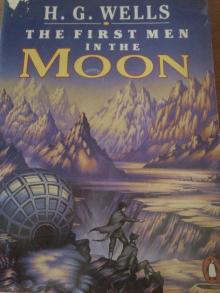 The First Men in the Moon
The First Men in the Moon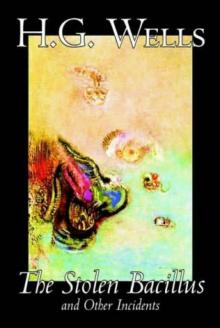 The Stolen Bacillus and Other Incidents
The Stolen Bacillus and Other Incidents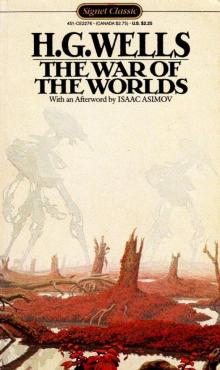 The War of the Worlds
The War of the Worlds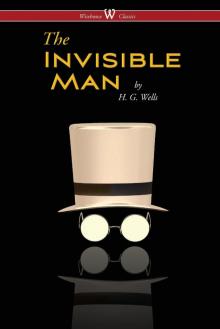 The Invisible Man: A Grotesque Romance
The Invisible Man: A Grotesque Romance The Island of Doctor Moreau
The Island of Doctor Moreau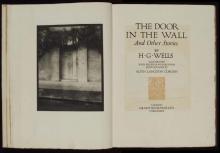 The Door in the Wall, and Other Stories
The Door in the Wall, and Other Stories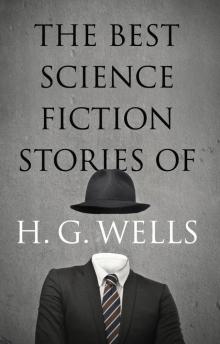 The Best Science Fiction Stories of H G Wells
The Best Science Fiction Stories of H G Wells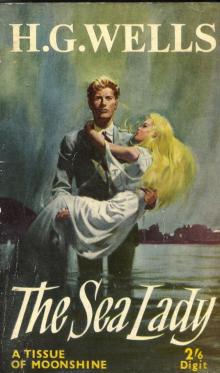 The Sea Lady
The Sea Lady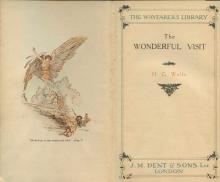 The Wonderful Visit
The Wonderful Visit Love and Mr. Lewisham
Love and Mr. Lewisham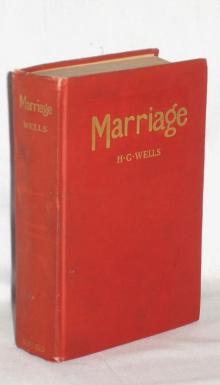 Marriage
Marriage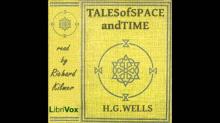 Tales of Space and Time
Tales of Space and Time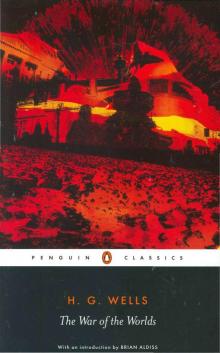 The War of the Worlds (Penguin Classics)
The War of the Worlds (Penguin Classics)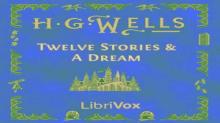 Twelve Stories and a Dream
Twelve Stories and a Dream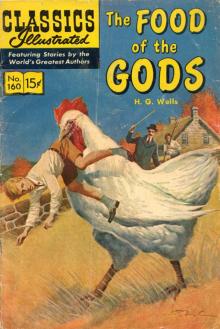 The Food of the Gods and How It Came to Earth
The Food of the Gods and How It Came to Earth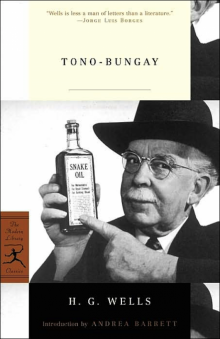 Tono-Bungay
Tono-Bungay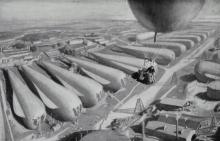 The War in the Air
The War in the Air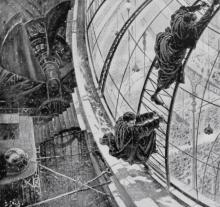 The Sleeper Awakes
The Sleeper Awakes The Country of the Blind and Other Stories
The Country of the Blind and Other Stories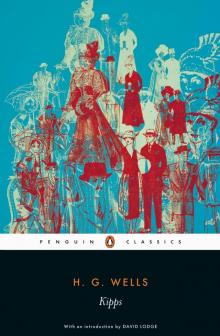 Kipps
Kipps The World Set Free
The World Set Free The Country of the Blind and other Selected Stories
The Country of the Blind and other Selected Stories Ann Veronica
Ann Veronica Ann Veronica a Modern Love Story
Ann Veronica a Modern Love Story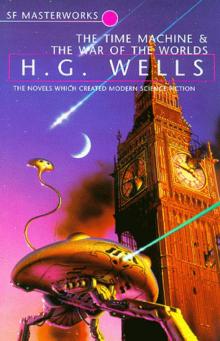 The Time Machine and The War of the Worlds
The Time Machine and The War of the Worlds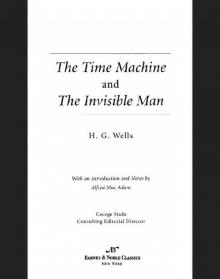 Time Machine and The Invisible Man (Barnes & Noble Classics Series)
Time Machine and The Invisible Man (Barnes & Noble Classics Series) The Time Machine and The Invisible Man
The Time Machine and The Invisible Man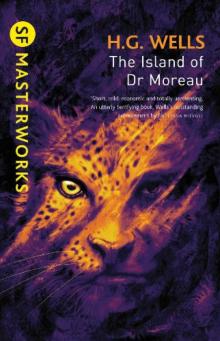 The Island of Dr. Moreau
The Island of Dr. Moreau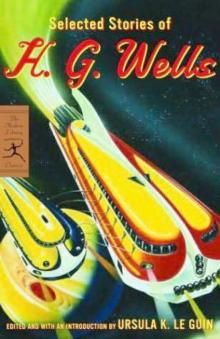 Selected Stories of H. G. Wells
Selected Stories of H. G. Wells Island of Dr. Moreau
Island of Dr. Moreau THE NEW MACHIAVELLI
THE NEW MACHIAVELLI